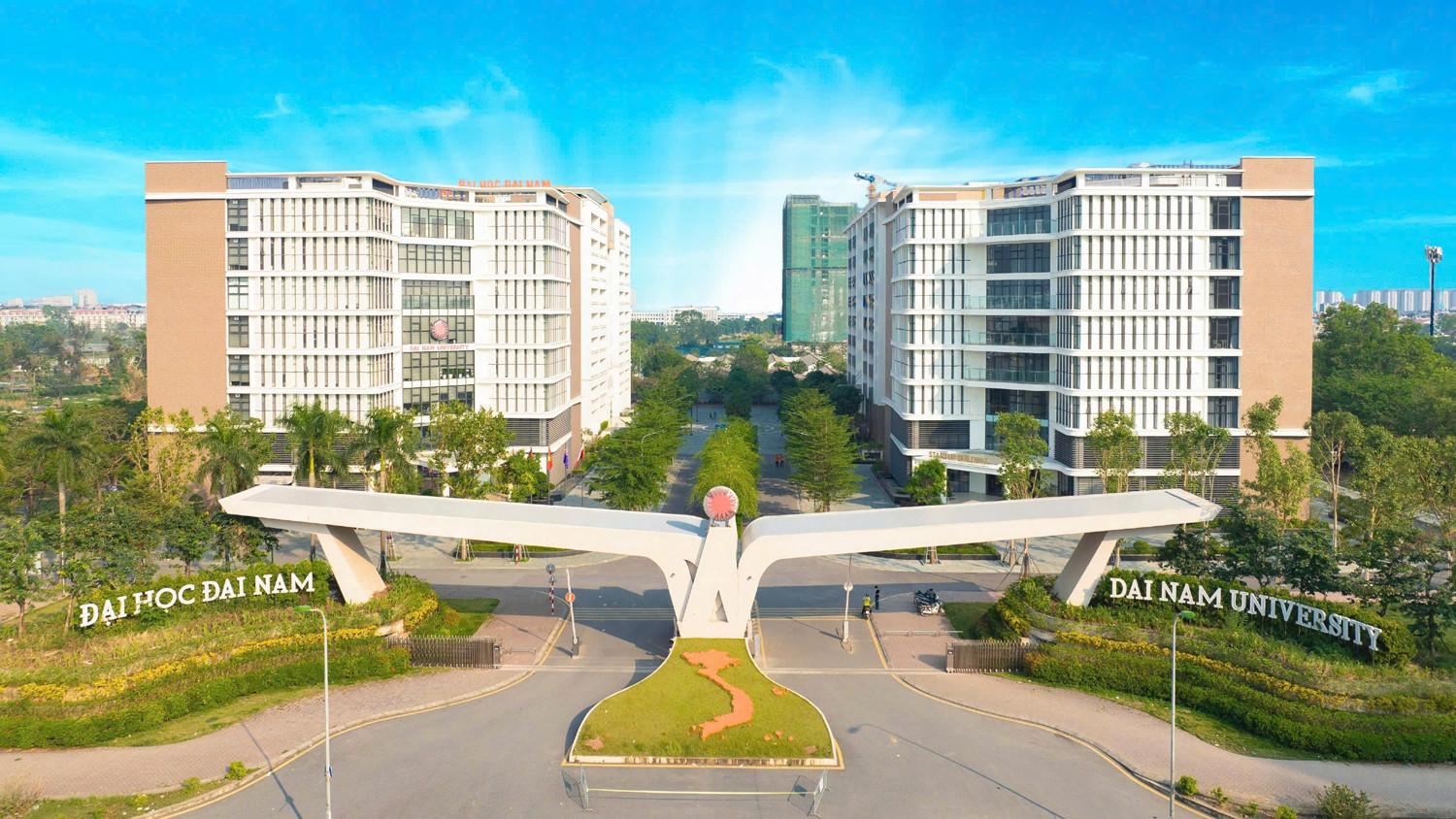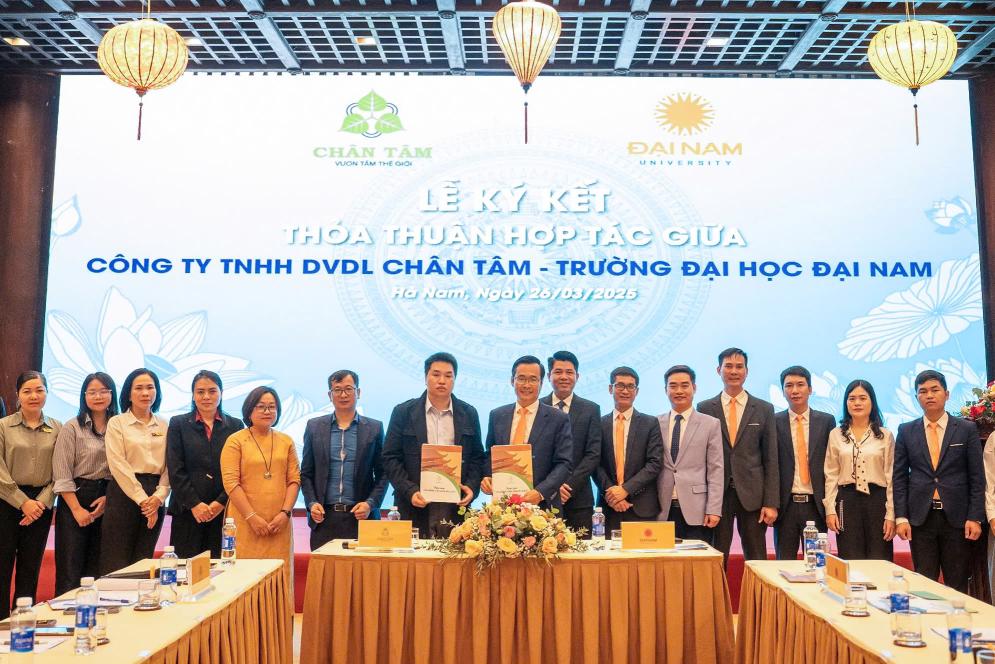Applying Management Accounting Methods into Practice
Posted date 25/10/2017
8.774 view

The subject of accounting is assets and the movement of assets in the process of production and business activities. According to liquidity, assets include short-term assets and long-term assets. According to the level of detail, these are types of assets: cash, receivables, investments, inventories, fixed assets, other types of assets, etc.
Dr. Le The Anh - Head of Department
The subject of accounting is assets and the movement of assets in the process of production and business activities. According to liquidity, assets include short-term assets and long-term assets. According to the level of detail, these are types of assets: money, receivables, investments, inventories, fixed assets, other types of assets, etc. At a more detailed level: what kind of money? where? (at the fund or deposited at financial institutions) receivables of which subjects? within the payment term or overdue? investment in which subjects? how is the investment efficiency? specifically each type of inventory at what level, what is the quality? suitable for business purposes or not? etc.
Thus, depending on specific management requirements, accounting objects are further detailed to provide information to serve the management and operation of the organization's production and business activities.
To be able to collect, process and provide information on the economic and financial situation, accounting uses methods such as:
+ Documents to record information that has been generated;
+ Evaluate recorded information as a basis for bookkeeping and summarize data according to indicators on reports;
+ Use the account system to synthesize and analyze data;
+ Double-entry bookkeeping to reflect assets according to asset relationships and asset formation (capital sources);
+ Conduct inventory to accurately determine the quantity of assets and evaluate and analyze the actual value of existing assets;
+ Prepare reports providing information as required by administrators.
The use of these methods is based on accounting requirements such as: full, honest, timely reflection and other specific requirements. Accounting requirements are set according to the needs of information users. Information users are internal and external entities. Each different entity has different purposes for using information, so the information needs of these entities are also different. External entities use information to serve decisions related to investment activities to seek profits or to serve the economic management goals of state agencies or research agencies... Internal entities use accounting information to manage and operate the production and business activities of the enterprise. Therefore, accounting information must be organized and analyzed in a variety of ways to meet the information needs of the entities. At the same time, information content also needs to be provided through many different channels but still must ensure consistency and systematization so that it can be checked and compared when necessary to ensure the reliability of the information.
The accounting system provides information about the economic and financial situation of the enterprise to internal and external parties, and this information must have a legal basis, which is the original document system. However, due to differences in the methods of processing information collected from the original documents to produce information with content appropriate to the information needs. Therefore, the method used first is the accounting method, then a combination of other methods to be able to analyze and process information, meeting the information needs of the subjects.
Through the analysis of needs and methods used to synthesize and analyze information to serve information users, it is clearer to see the position of management accounting as a part of the enterprise accounting system. Therefore, the object of management accounting is also assets and the movement of assets in the production and business process. The goal and task of management accounting is to provide information to meet specific management requirements within the enterprise. Therefore, management accounting information needs to be more detailed and timely than financial accounting information. Management accounting uses the following methods:
First, the voucher method: Accounting vouchers capture the most honest image of economic and financial activities arising at the unit. Vouchers are created to serve both financial accounting and management accounting. Therefore, in addition to the basic contents of the voucher to serve the requirements of general accounting, it is also necessary to base on the requirements of detailed accounting to specify additional contents recorded on the voucher to serve this requirement. After being created, the vouchers are transferred to the financial accounting and management accounting departments (each department has one copy) to serve as the basis for creating the initial database to synthesize and analyze information.
Second, the method of valuation: Valuation is the use of currency to express the value of assets. The principle of valuation of financial accounting is the original cost method (actual price). In management accounting, assets are also valued at original cost as the basis for information analysis. However, to meet the requirement of providing quick information to serve the immediate management requirements in management accounting, accounting prices can be used.
Third, the account method: This is the method used to systematize economic transactions according to the economic content of the transaction in order to reflect and regularly manage each accounting object. In management accounting, accounts are used to monitor in detail each object of management accounting. These objects are also objects of financial accounting but are reflected in detail according to the information requirements of business administrators.
Fourth, double-entry bookkeeping method: is a way to record economic transactions into accounting accounts, showing the relationship between accounting objects. Management accounting relies on information recorded by the double-entry bookkeeping method to analyze and synthesize information to provide to managers.
Fifth, costing method: Is the method of determining the cost in a volume of products or services that have been completed. According to the requirement of providing complete and timely information of managers on costs and production prices, the management accounting department must collect complete and detailed cost items of production stages to serve the purpose of calculating costs. In management accounting, costs are often calculated according to standard costs. Therefore, enterprises need to build a system of standards in production and business.
Sixth, internal reporting method: Internal reports are reports prepared according to the information requirements of managers at all levels of management within the enterprise.
Seventh, technical methods: Management accounting uses technical methods to synthesize and analyze information such as: graph method, maximum-minimum method, least square method... to provide information for decision making and business planning.
From the above analysis, it can be seen that the system of management accounting methods is also a general accounting method, but has its own characteristics to suit the information nature of management accounting, which are:
+ Internal information is only provided to business administrators;
+ Information is synthesized, analyzed and provided flexibly to meet the frequent changes in economic and financial events of the enterprise.
+ Besides reflecting the value of activities, management accounting information also describes activities and the nature of activities in management reports.
+ Management accounting information is oriented towards the future, so the information is predictive and serves the purpose of planning and making decisions on production and business operations.
+ With the aim of providing information to managers, the information in management reports is more instructive than the legal nature of the original source documents. Therefore, management accounting information is bound by the system of accounting standards.
To determine the content of management accounting in each specific enterprise, accountants base on the objectives and management requirements of the administrators. These contents depend on the characteristics of production and business activities and the management level of the administrators in each enterprise. However, it can be summarized into the following basic contents:
Firstly, detailed accounting of fixed assets: that is, reflecting the quantity, value, technical parameters, depreciation time, depreciation rate, fluctuations in quantity, in value due to sale, liquidation, internal transfer, transfer by order of superiors, etc.
Second, detailed accounting of materials, goods, and finished products: is the reflection of quantity and value of each type, each group, and each warehouse.
Third, detailed accounting of receivables and payables: Debts need to be reflected according to each debtor, each debt-generating transaction and debt payment. For debts originating in foreign currencies, it is necessary to monitor the debt payment period, account for the debt in detail, convert to Vietnamese Dong and re-evaluate these debts when preparing financial statements.
Fourth, accounting for costs incurred by each object: Determine in detail the cost items according to economic content, according to cost items, according to cost behavior. Clearly identify the cost collection objects and calculate the production cost for each type of product.
Fifth, reflect in detail the business capital sources according to capital contributors.
Sixth, reflect detailed costs and income by department and activity as required by administrators.
Seventh, periodically prepare internal management reports and quick reports upon request to serve the business's production and operation decision-making needs.
Eighth, make a budget to serve the function of checking and monitoring the production and business process.
Ninth, collect, synthesize, analyze and process information to provide useful information to serve the needs of managers in making short-term and long-term decisions.
From the analysis of the contents of financial accounting, it can be seen that the contents of management accounting mentioned above have included the detailed accounting contents that the Vietnamese enterprise accounting system has implemented. However, the recording of financial accounting aims at synthesizing information for financial reporting and determining tax obligations to the State budget, not synthesizing information to serve the requirements of enterprise management. Financial contents and descriptions of activities to serve the requirements of planning, making short-term and long-term decisions have hardly been implemented. That is an objective and acceptable existence in a subsidized economy, in which there is not much initiative, and forecasting is not an urgent requirement. In a complex competitive market economy, there are many potential risks that enterprises face in order to survive and develop, so they need useful information to serve decision making. This information is not only within the framework of accounting but also has statistical accounting and business accounting. In addition, the information is not only shown on financial indicators but also reflects the nature and level of economic activities. This type of information is only provided by the management accounting department in the enterprise. Therefore, management accounting is not only detailed accounting but also analyzes and synthesizes to provide useful and timely information to serve the requirements of business management.
Through research on the production and business activities of some Vietnamese enterprises today, it is shown that the financial accounting part is the most concerned part, although the requirements for providing information to serve the production and business management are always raised. The reason for this situation is that the enterprise accounting system operates according to the unified accounting regime of the State. That accounting regime only updates the content of financial accounting, including general accounting and detailed accounting for some subjects. Therefore, enterprises have not sought any other accounting system other than the financial accounting system.
In order for the management accounting system to be applied to Vietnamese enterprises, operating simultaneously with the financial accounting system, there must be propaganda about the flexibility and usefulness of implementing management accounting for the enterprise's leadership. Enterprises, as the subject of action, need to clearly recognize the necessity of management accounting, distinguish the scope of management accounting, the content of management accounting, the method of conducting management accounting, to organize the apparatus to conduct management accounting work, organize books, and build a reporting system. In addition, there needs to be support from professional organizations such as the Vietnam Accounting Association in terms of expertise and innovation in management accounting training at training institutions to provide a source of management accounting labor.
REFERENCES
1. Nguyen Ngoc Quang (2011), ' Business management accounting' , National Economics University Publishing House.
2. Doan Xuan Tien (2012), ' Management accounting textbook' , Academy of Finance. Financial Publishing House.
3. Atkinson, Kaplan & Young (2004), 'Management Accounting' . Prentice Hall. Four Editions.
4. Nghiem Van Loi (2014), 'Vietnamese enterprises are still vague about management accounting', http://tinnhanhchungkhoan.vn/thuong-truong/doanh-nghiep-viet-con-mo-ho-ve-ke-toan-quan-tri-119770.html
5. Tran Tuan Anh, Do Thi Thu Hang (2014), Application of cost management accounting and product pricing in Vietnamese enterprises , http://www.tapchitaichinh.vn/nghien-cuu--trao-doi/trao-doi-binh-luan/ung-dung-ke-toan-quan-tri-chi-phi-va-gia-thanh-san-pham-trong-cac-doanh-nghiep-viet-nam-53056.html >
Thus, depending on specific management requirements, accounting objects are further detailed to provide information to serve the management and operation of the organization's production and business activities.
To be able to collect, process and provide information on the economic and financial situation, accounting uses methods such as:
+ Documents to record information that has been generated;
+ Evaluate recorded information as a basis for bookkeeping and summarize data according to indicators on reports;
+ Use the account system to synthesize and analyze data;
+ Double-entry bookkeeping to reflect assets according to asset relationships and asset formation (capital sources);
+ Conduct inventory to accurately determine the quantity of assets and evaluate and analyze the actual value of existing assets;
+ Prepare reports providing information as required by administrators.
The use of these methods is based on accounting requirements such as: full, honest, timely reflection and other specific requirements. Accounting requirements are set according to the needs of information users. Information users are internal and external entities. Each different entity has different purposes for using information, so the information needs of these entities are also different. External entities use information to serve decisions related to investment activities to seek profits or to serve the economic management goals of state agencies or research agencies... Internal entities use accounting information to manage and operate the production and business activities of the enterprise. Therefore, accounting information must be organized and analyzed in a variety of ways to meet the information needs of the entities. At the same time, information content also needs to be provided through many different channels but still must ensure consistency and systematization so that it can be checked and compared when necessary to ensure the reliability of the information.
The accounting system provides information about the economic and financial situation of the enterprise to internal and external parties, and this information must have a legal basis, which is the original document system. However, due to differences in the methods of processing information collected from the original documents to produce information with content appropriate to the information needs. Therefore, the method used first is the accounting method, then a combination of other methods to be able to analyze and process information, meeting the information needs of the subjects.
Through the analysis of needs and methods used to synthesize and analyze information to serve information users, it is clearer to see the position of management accounting as a part of the enterprise accounting system. Therefore, the object of management accounting is also assets and the movement of assets in the production and business process. The goal and task of management accounting is to provide information to meet specific management requirements within the enterprise. Therefore, management accounting information needs to be more detailed and timely than financial accounting information. Management accounting uses the following methods:
First, the voucher method: Accounting vouchers capture the most honest image of economic and financial activities arising at the unit. Vouchers are created to serve both financial accounting and management accounting. Therefore, in addition to the basic contents of the voucher to serve the requirements of general accounting, it is also necessary to base on the requirements of detailed accounting to specify additional contents recorded on the voucher to serve this requirement. After being created, the vouchers are transferred to the financial accounting and management accounting departments (each department has one copy) to serve as the basis for creating the initial database to synthesize and analyze information.
Second, the method of valuation: Valuation is the use of currency to express the value of assets. The principle of valuation of financial accounting is the original cost method (actual price). In management accounting, assets are also valued at original cost as the basis for information analysis. However, to meet the requirement of providing quick information to serve the immediate management requirements in management accounting, accounting prices can be used.
Third, the account method: This is the method used to systematize economic transactions according to the economic content of the transaction in order to reflect and regularly manage each accounting object. In management accounting, accounts are used to monitor in detail each object of management accounting. These objects are also objects of financial accounting but are reflected in detail according to the information requirements of business administrators.
Fourth, double-entry bookkeeping method: is a way to record economic transactions into accounting accounts, showing the relationship between accounting objects. Management accounting relies on information recorded by the double-entry bookkeeping method to analyze and synthesize information to provide to managers.
Fifth, costing method: Is the method of determining the cost in a volume of products or services that have been completed. According to the requirement of providing complete and timely information of managers on costs and production prices, the management accounting department must collect complete and detailed cost items of production stages to serve the purpose of calculating costs. In management accounting, costs are often calculated according to standard costs. Therefore, enterprises need to build a system of standards in production and business.
Sixth, internal reporting method: Internal reports are reports prepared according to the information requirements of managers at all levels of management within the enterprise.
Seventh, technical methods: Management accounting uses technical methods to synthesize and analyze information such as: graph method, maximum-minimum method, least square method... to provide information for decision making and business planning.
From the above analysis, it can be seen that the system of management accounting methods is also a general accounting method, but has its own characteristics to suit the information nature of management accounting, which are:
+ Internal information is only provided to business administrators;
+ Information is synthesized, analyzed and provided flexibly to meet the frequent changes in economic and financial events of the enterprise.
+ Besides reflecting the value of activities, management accounting information also describes activities and the nature of activities in management reports.
+ Management accounting information is oriented towards the future, so the information is predictive and serves the purpose of planning and making decisions on production and business operations.
+ With the aim of providing information to managers, the information in management reports is more instructive than the legal nature of the original source documents. Therefore, management accounting information is bound by the system of accounting standards.
To determine the content of management accounting in each specific enterprise, accountants base on the objectives and management requirements of the administrators. These contents depend on the characteristics of production and business activities and the management level of the administrators in each enterprise. However, it can be summarized into the following basic contents:
Firstly, detailed accounting of fixed assets: that is, reflecting the quantity, value, technical parameters, depreciation time, depreciation rate, fluctuations in quantity, in value due to sale, liquidation, internal transfer, transfer by order of superiors, etc.
Second, detailed accounting of materials, goods, and finished products: is the reflection of quantity and value of each type, each group, and each warehouse.
Third, detailed accounting of receivables and payables: Debts need to be reflected according to each debtor, each debt-generating transaction and debt payment. For debts originating in foreign currencies, it is necessary to monitor the debt payment period, account for the debt in detail, convert to Vietnamese Dong and re-evaluate these debts when preparing financial statements.
Fourth, accounting for costs incurred by each object: Determine in detail the cost items according to economic content, according to cost items, according to cost behavior. Clearly identify the cost collection objects and calculate the production cost for each type of product.
Fifth, reflect in detail the business capital sources according to capital contributors.
Sixth, reflect detailed costs and income by department and activity as required by administrators.
Seventh, periodically prepare internal management reports and quick reports upon request to serve the business's production and operation decision-making needs.
Eighth, make a budget to serve the function of checking and monitoring the production and business process.
Ninth, collect, synthesize, analyze and process information to provide useful information to serve the needs of managers in making short-term and long-term decisions.
From the analysis of the contents of financial accounting, it can be seen that the contents of management accounting mentioned above have included the detailed accounting contents that the Vietnamese enterprise accounting system has implemented. However, the recording of financial accounting aims at synthesizing information for financial reporting and determining tax obligations to the State budget, not synthesizing information to serve the requirements of enterprise management. Financial contents and descriptions of activities to serve the requirements of planning, making short-term and long-term decisions have hardly been implemented. That is an objective and acceptable existence in a subsidized economy, in which there is not much initiative, and forecasting is not an urgent requirement. In a complex competitive market economy, there are many potential risks that enterprises face in order to survive and develop, so they need useful information to serve decision making. This information is not only within the framework of accounting but also has statistical accounting and business accounting. In addition, the information is not only shown on financial indicators but also reflects the nature and level of economic activities. This type of information is only provided by the management accounting department in the enterprise. Therefore, management accounting is not only detailed accounting but also analyzes and synthesizes to provide useful and timely information to serve the requirements of business management.
Through research on the production and business activities of some Vietnamese enterprises today, it is shown that the financial accounting part is the most concerned part, although the requirements for providing information to serve the production and business management are always raised. The reason for this situation is that the enterprise accounting system operates according to the unified accounting regime of the State. That accounting regime only updates the content of financial accounting, including general accounting and detailed accounting for some subjects. Therefore, enterprises have not sought any other accounting system other than the financial accounting system.
In order for the management accounting system to be applied to Vietnamese enterprises, operating simultaneously with the financial accounting system, there must be propaganda about the flexibility and usefulness of implementing management accounting for the enterprise's leadership. Enterprises, as the subject of action, need to clearly recognize the necessity of management accounting, distinguish the scope of management accounting, the content of management accounting, the method of conducting management accounting, to organize the apparatus to conduct management accounting work, organize books, and build a reporting system. In addition, there needs to be support from professional organizations such as the Vietnam Accounting Association in terms of expertise and innovation in management accounting training at training institutions to provide a source of management accounting labor.
REFERENCES
1. Nguyen Ngoc Quang (2011), ' Business management accounting' , National Economics University Publishing House.
2. Doan Xuan Tien (2012), ' Management accounting textbook' , Academy of Finance. Financial Publishing House.
3. Atkinson, Kaplan & Young (2004), 'Management Accounting' . Prentice Hall. Four Editions.
4. Nghiem Van Loi (2014), 'Vietnamese enterprises are still vague about management accounting', http://tinnhanhchungkhoan.vn/thuong-truong/doanh-nghiep-viet-con-mo-ho-ve-ke-toan-quan-tri-119770.html
5. Tran Tuan Anh, Do Thi Thu Hang (2014), Application of cost management accounting and product pricing in Vietnamese enterprises , http://www.tapchitaichinh.vn/nghien-cuu--trao-doi/trao-doi-binh-luan/ung-dung-ke-toan-quan-tri-chi-phi-va-gia-thanh-san-pham-trong-cac-doanh-nghiep-viet-nam-53056.html >
Latest article
View all Posts
Related articles
See all related Articles
Register for admission consultation 2025
Dai Nam University offers admissions to
36 academic programs
across a diverse range of disciplines, including Healthcare, Engineering and Technology, Economics and Business, and Social Sciences and Humanities.
Register now to secure
scholarships and tuition support worth up to 55 billion VND
scholarships and tuition support worth up to 55 billion VND

Register now to secure
scholarships and tuition support worth up to 55 billion VND
scholarships and tuition support worth up to 55 billion VND








